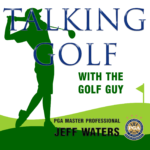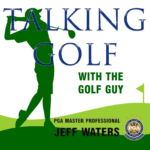The 101st United States Open Championship played on Pebble Beach Golf Links June 13-16, 2019, and claimed by Gary Woodland three shots clear of Brooks Koepka, unveiled some memorable moments and memories.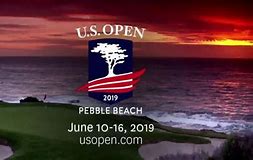
The following story is just one of several collected from that tournament.
Still, before we get to the details of the actual competition, I have a personal confession to make before recounting those tales.
It hurts like hell to get out of bed in the morning, and deep in my heart, I realize it will probably will not get any better soon.
However, If you are a boomer and of a certain age, you probably share the same misfortunes.
Tylenol and Ibuprofen are everyday therapies, and the pain, aching, and discomfort are a constant presence and harsh reminder of my youthful carelessness and lack of caution.
After hobbling grudgingly past the biblical old-age reference of threescore and ten years and after a lifetime of abuse and indulgence, my body is forever paying the price.
The cost is quickly mounting, and I share most of the blame.
Over my years as an athlete, handyman, sportsperson, and soldier, I have suffered numerous broken bones, superficial cuts, abrasions, operations, stitches, and other ailments too many to count, including various clinical tests, x-rays, casts, and medical procedures.
My body is beaten up, and it hurts.
But it is my burden to bear because, like most kids in Middle America during the 1950s and ’60s, the outdoors was the place to be and all it entailed, cautions be damned.
Long before the electronic revolution deadened the senses of generations that followed, we had to create our playfields and make up our games.
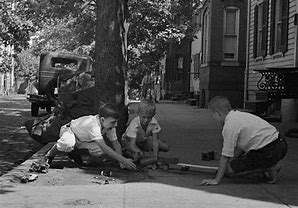 Cops and Robbers, Cowboys and Indians, Pirates and Buccaneers.
Cops and Robbers, Cowboys and Indians, Pirates and Buccaneers.
Playing, fighting, roaming the streets, coming of age, hunting, fishing, baseball, football, and basketball, with a bit of golf thrown in to fill the gaps.
Nightly raids on neighborhood gardens and orchards.
We waded and swam in the ponds and streams that surrounded us.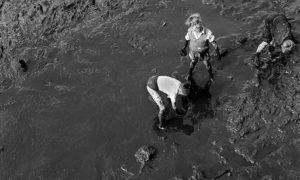
Climbing trees and playing in the woods and fields, we engaged with life like there was no tomorrow.
We did it all and then some more.
And why not?
We were invincible, picking up the broken pieces and getting back up.
It was a time of great peace, harmony, and tranquility; we were all free-range children.
No one in my community locked their doors, and parents were not concerned about where or what you were doing as long as you were home by dark.
The neighborhood policed itself.
Ours was the first cohort of Americans to have survived a worldwide apocalypse, and we had no clue of how blessed and lucky we were.
Nor did we care.
We lived for the moment, whether morning, noon, or night; tomorrow was another day and more adventures.
We accumulated our scars, bruises, and cracked bones and then moved on.
Our parents, teachers, family, friends, and coaches encouraged us to be active and engage in frivolity, sports, fun, and games.
Because those who had survived the battles—our moms and dads, grandparents, aunts, uncles, and all those who had done the heavy lifting, performed heroic deeds and made great sacrifices—knew how blessed and lucky we were to live and grow up in the present era.
All those who had prevailed knew, on a profoundly personal level, how fortunate the planet and their children were to have escaped the worst of human nature on a global scale.
Theirs was a generation that had endured two world wars and the most significant depression the human race has ever witnessed.
It was a time of turmoil and introspection for a tattered and tired generation of Americans seeking a better lifestyle and way of life for themselves and their families.
This is why the Silent Generation, our parents, and grandparents became contemporary history’s most accommodating, lenient, and tolerant mentors and guardians.
Because of that mindset and our parents’ reluctance to impose limits on their kids, the baby boomers, my contemporaries, grew up to become the most permissive, selfish, indulgent generation the human race has ever seen before.
Sex, drugs, and rock and roll became our mantra and were a universal anthem amongst our peers.
You identified with the movement’s philosophy even if you did not participate physically.
You were part of it and wistfully embraced it, if only in your most secret dreams and fantasies.
Seriously, who did not want to attend Woodstock?
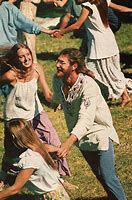 Or surf the beach, fall in love, and dance the night away without a care?
Or surf the beach, fall in love, and dance the night away without a care?
I partook of all the forbidden fruits that society offered, as did most of the people I grew up with and knew.
It was a way of life we thought would never end.
But the fantasies, dreams, and decadent lifestyles we shared slowly made way for real-life experiences that had a way of extracting their reckoning and vengeance on aging and debauched bodies.
The myth of invincibility my age group absorbed and the pain that illusion cost all of us physically, mentally, and emotionally is why I now have a prescription for medicinal marijuana. On my trip to the US Open at Pebble Beach, I looked forward to using it.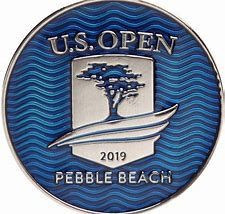
In my fifty years as a PGA Golf Professional, Broadcaster, and Journalist, I have spent a lifetime and more on the road.
100s of golf tournaments, golf trips, outings, broadcast assignments, personal appearances, wherever, all over the world, traveling on airplanes, automobiles, buses, trains, boats, and courtesy cars.
Through it all, chaos, disorder, and calamity become part of the deal, brought on by the reality that agendas will always be a mess in advance of it all, and things will go wrong.
Schedules made will collapse in disarray with early and late tee times, press and broadcast deadlines, meetings, obligations, weather, travel issues, wants, needs, and compromise.
A routine becomes established out of necessity, and the template remains the same regardless of the event, length of stay, or location.
Then, have a plan and devise contingencies to deal with the glitches and problems the best you can, including the mental and physical inconveniences that will always materialize.
The sequence becomes predictable and firm.
Travel to the location, rent a car or take a cab, check out the hotel, assess the amenities, assemble a list of what you might need, canvass the neighborhood, and find the closest grocery store, liquor outlet, restaurants, and pubs.
Stock up on the first day, taking care of business, knowing you might not get another chance for a myriad of reasons.
Chief among them is that once the tournament or event begins, there is no pause in the timetable and no time to re-group.
Late nights and early wake-up calls have become the norm.
So, you do what is necessary and adapt.
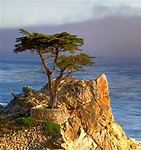 Monterey, California, and the Southern California Coastline are among the world’s most scenic, impressive, and celebrated destinations.
Monterey, California, and the Southern California Coastline are among the world’s most scenic, impressive, and celebrated destinations.
The 2019 United States Open Golf Championship host city was an incredible assignment with no snags.
The hotel was perfect, right on the beach, and there were no problems; everything was right up the street and or nearby, including a Grocery Store, Liquor Store, Health Clinic, Restaurants, Fast Food Outlets, and Convenience Stores were all there and handy.
But the Clinic was the first stop, and for a good reason.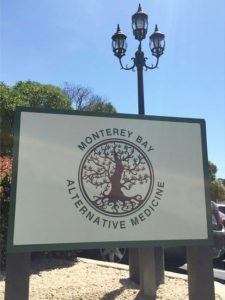
Friends, including my doctor, had begun singing the praises of the therapeutic and anti-inflammatory qualities of a salve derived from CBD contained in the marijuana plant, and CBD happens to be legal, regulated, inspected, and readily available in California.
Unlike THC, the psychoactive ingredient in marijuana that gets you high, which was the main objective in my younger days.
Cannabidiol or CBD, the other main component in cannabis, is not psychoactive and has received a federal stamp of approval with the passage of the 2018 Farm Bill, which legalized the production and distribution of hemp products previously prohibited under federal law.
No more backyard deals or street corner purchases, wondering if what you were getting was the real deal or how pure or diluted the product was, and after the hours-long drive from San Francisco, I needed relief for my aching knees, arthritic hands, and worn-out back, and I needed something soon.
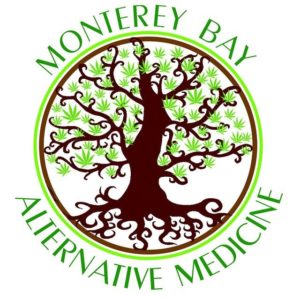 This is why I am now a card-carrying patient at the Monterey Alternative Medical Clinic and dispensary.
This is why I am now a card-carrying patient at the Monterey Alternative Medical Clinic and dispensary.
It was an enjoyable and agreeable experience and very clinical, at least at first.
The vibe dramatically changes as you go through the process, which is by design.
I do not know if you, the reader, have been to a marijuana dispensary, but the few I have been to are similar in setting and experience.
They try extremely hard to make it like a doctor’s visit.
It is not.
Tattooed doorkeepers are checking your ID at the door.
I mean, really?
It was more like attending a rock concert or joining a private club.
After you are allowed to enter the building, you check in and register, a process remarkably similar to that of an actual doctor’s office, down to the obligatory magazines, clipboards, and personal history.
As a senior citizen and veteran, I received a 25% off coupon on my first purchase.
They know their market and their customers’ needs and wants.
After a sufficient interval, if you pass muster, you are accepted as a patient and allowed to enter the showroom.
Instantly, a different atmosphere, very classy with marble floors, works of art, ordinated lighting, and displays.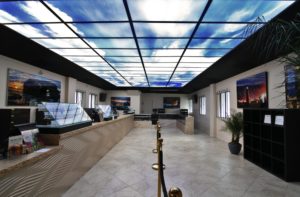
It reminded me of a high-end specialty boutique with a distinct Tiffany ambiance, perfect displays, and presentations.
I do not offer market analogy flippantly.
The showroom was enveloped in glass cases so that you could see and peruse all the assorted merchandise.
Way impressive, and they had it all.
Buds, oils, gummies, salves, pipes, and drug paraphernalia—everything you could imagine—it was like visiting a smorgasbord straight out of Haight-Ashbury.
On top of the display counters, selected product samples are on exhibit with lots of glass, chrome, and engraved information cards touting their ingredients, percentages of THC and CBD as required by law, and how to use the product.
I gravitated towards the tinctures, creams, and salves that do not enter the bloodstream and interact only with the affected area.
After years of abuse and self-medicating, I had grown tired of a daily regime of ingesting mixed bags of pills that mess up your body and mind with who knows what kind of additives and chemicals to destroy whatever remains of your liver.
I no longer indulge in most of the craziness of my youth, and I have not smoked in years.
However, as I stroll through the displays, I distinctly remember and instantly recognize the intense, poignant aroma that hangs heavy and saturates the entire showroom.
It brought back a ton of memories of yesteryears and days gone by.
As I perused the wares, I glanced to my left as an older woman, well-dressed, looked up at me and smiled.
Instantly, I relaxed as my young, pierced, and tattooed attendant asked: “How may I help you?”
I had rehearsed my answer and hoped it conveyed my needs, but I was still strangely nervous.
“I am a child of the sixties,” I said, “and I grew up on Maui Wowie, Panama Red, and Thai Stick.”
“I do not crave mellow,” I replied, “I don’t require nostalgia, peace, and tranquility, and I don’t want to get high; I just need something for my aches and pain.”
She took it well.
Whether it was her training or she had heard the same request repeated before, she smiled.
I was more forceful and louder than I had intended and looked around to see if other people were listening.
On my right was a guy, worn down and beaten up, missing an arm, with many hard miles manifested on his weather-beaten face, looking twenty years older than me but much younger in years.
Making eye contact, I immediately felt his pain; he owned mine.
The dude knew precisely what I was looking for, and the girl behind the counter knew it, too.
They both suggested the same ointment.
You have to love California.
They are so, so way ahead of the curve.
In a classic case of reality exceeding expectations, using my senior-citizen discount, I promptly bought as much product as they allowed, waited patiently as they wrapped my purchase, placed it in a designer gift bag, and then thanked them for an enlightening and pleasant experience.
Exiting the Clinic with medicine in hand, I finished shopping before returning to my hotel with the rest of my supplies.
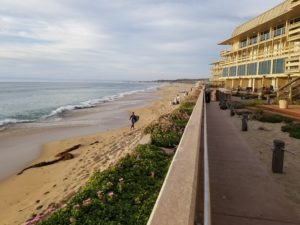 After settling into my ocean-view room, I relaxed on an outdoor chair on my patio veranda and watched the sun begin its leisurely descent into Monterey Bay.
After settling into my ocean-view room, I relaxed on an outdoor chair on my patio veranda and watched the sun begin its leisurely descent into Monterey Bay.
I poured myself a gin and tonic, anointed my aching joints with the soothing and therapeutic potion I had recently acquired, and began the unhurried wait for the aches, pains, and tribulations of my misbegotten youth to fade out like the waves slapping on the shoreline below my feet.
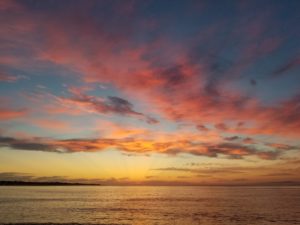 As I watch the sunset deepen into darkness, I contemplate the roads I have taken, the many paths I have followed, and my present journey, not just to this event and tournament but the totality of my existence and a lifespan of experiences and begin a self-examination of how this moment in time came about, who I am, and why I am here.
As I watch the sunset deepen into darkness, I contemplate the roads I have taken, the many paths I have followed, and my present journey, not just to this event and tournament but the totality of my existence and a lifespan of experiences and begin a self-examination of how this moment in time came about, who I am, and why I am here.
In deep introspection, I recounted the arc of my life and compared it to the sea and the allure of the incessant whitecaps, each surging endlessly after the other with a mesmerizing predictability.
I slowly equate the waves to the years of my past that have slipped away and washed up against the rocky shores of time.
Gradually, as the medicine works its magic, the uninterrupted swells of the moonlit sea become intertwined with memories, conflicts, moral dilemmas, silly mistakes, and the foolish pleasures of my past, and, like the waves below, those follies of my younger years, fade away, canceled out like footprints in the sand.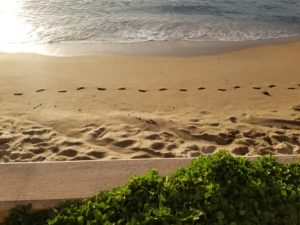
Who could have fathomed that the shadowy and forbidden drug of my younger years, which had contributed to so many of the pains and trials of my growing up and adult years, could now be the elixir that might liberate me from the misery and suffering of my twilight years?
As I bask in the glow of a perfect summer’s eve and reflect on the costs of my lifetime of excess, the many heartaches, toils, and troubles that I have endured, I realize that whatever has brought me to this particular moment, at this crossroads of my existence, was worth whatever price I had paid, and was time well spent, for what are we at the end of the day, but the entirety of our individual recollections and remembrances.
For tomorrow has now become not just another day but an awakening to a new dawn that promises a healthier and pain-free future with many more adventures.
I can hardly wait.

